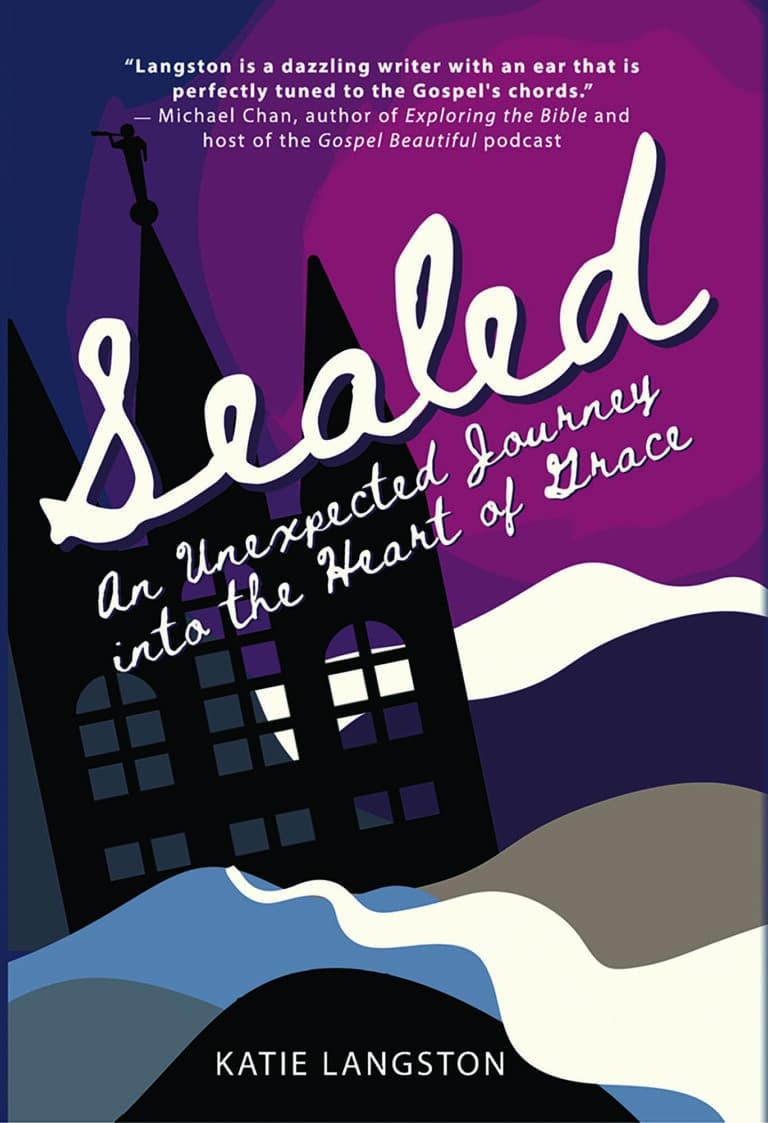Book review of Katie Langston’s Sealed
In a short essay for BYU Studies Quarterly (2015, 183—197), scholar and author Angela Hallstrom noted that “Mormon women have been particularly diligent writers of personal history, and their words have helped to preserve a nuanced, multifaceted representation of what it means to be a female Latter-day Saint.” I remember more than a few Young Women’s lessons on the importance of journaling, and perhaps this spiritual practice laid the foundation for many memoirs in print today. Mormon women’s memoirs discuss personal and spiritual growth in the wake of challenges. Some of these challenges are widely-reported tragedies, such as Elizabeth Smart’s My Story (2014), recounting her kidnapping, or Stephanie Nielson’s Heaven Is Here: An Incredible Story of Hope, Triumph, and Everyday Joy (2013) and Renelle Wallace’s The Burning Within (1994), which are both about disastrous plane crashes that leave their victims alive but severely burned. There is a subgenre of Mormon women’s memoirs that focuses on the personal stories of formerly polygamous women; Rachel Jeffs authored the most recent one, Breaking Free: How I Escaped Polygamy, the FLDS Cult, and My Father, Warren Jeffs (2017). All of these narratives work to both humanize Mormons in mainstream culture and outline the distinctiveness of Mormon experiences for a broad audience.
A number of recent memoirs discuss life experiences from social locations that are outside of the established Mormon norms of white, middle-class, American, nuclear families. Tamu Smith and Zandra Vranes’s Can I Get an Amen? Celebrating the Lord in Everyday Life (2019), initially released with the title Diary of Two Mad Black Mormons: Finding the Lord’s Lessons in Everyday Life (2014), reflects on the experiences of the Black authors growing up in a church that celebrates whiteness. Tracy McKay’s The Burning Point (2017) discusses drug addiction and single parenthood. Melissa Wei-Tsing Inouye’s Crossings: A Bald Asian American Latter-day Saint Woman Scholar’s Ventures Through Life, Death, Cancer, and Motherhood (2019) collects Inouye’s memories of mothering her children in Hong Kong, China, and New Zealand. Within this story, Inouye receives a cancer diagnosis and considers the elements of Mormon faith that she wants to pass on to her children. These memoirs showcase the complexity and diversity of life within a religious community that has been known by outsiders for its homogeneity.
The themes of Katie Langston’s Sealed (Thornbush Press, 2021) overlap with many of the themes that are already present in this genre: motherhood, marriage, mental health, temple ceremonies, and choosing between faith and ambition. Langston describes her family’s firm commitment to the LDS Church, where that commitment included homeschooling using instructional materials from the far-right Kimber Academy. Tara Westover’s Educated: A Memoir (2018) reflects on the challenges of growing up in poverty in a home that championed educational neglect and shunned the outside world. While Westover’s story is more extreme, it is hard to ignore those fundamentalist echoes in Sealed. Like Lynn Wilder’s Unveiling Grace (2013), Sealed is also a story about losing Mormon faith and finding grace in a different Christian tradition.
Bodies, sex, and sexuality are a part of Langston’s narrative from the beginning and form an important throughline for the story. These same themes are central to Elna Baker’s The New York Regional Mormon Singles Halloween Dance: A Memoir (2010) and Nicole Hardy’s Confessions of a Latter-day Virgin: A Memoir (2013). While all three books critique the LDS Church’s teachings on bodies, modesty, sex, and sexuality, Baker and Hardy address sexual experience as part of the process of claiming their agency as adults while leaving the church. These are familiar stories. But Sealed begins differently, with a story of the author being shamed by her mother for childhood masturbation. Langston’s treatment of childhood sexual pleasure feels bold as she resists both the taboo of discussing such things and religious shame in the telling of this story. Her parents’ efforts to solve this problem result in Langston experiencing persistent feelings of unworthiness and anxiety about sin. She begins to confess regularly to try to achieve absolution and this becomes an obsessive behavior that leads her to confess to sins she has not committed, just in case. She prays endless prayers seeking forgiveness for cosmic debts she can never get under her control and punishes herself with damaging self-talk. Langston is never sure that she has done enough to appease a demanding God. As a child, she begins to worry about her salvation, and no one in her family is able to reassure her of God’s love. Her eventual encounter with God’s grace begins to create hope and healing for her. She seeks theological education to rebuild her faith. The story ends with a new baptism that washes away fear, the debris of old faith, and allows her to find the liberation from sin that she had been seeking from the beginning.
Langston’s willingness to discuss masturbation and her complex feelings and behaviors surrounding it is the great strength of this book. Sealed is a theological reflection on the problem of sin and the limitations of Mormon doctrine in identifying and addressing sin in a productive way. The author never suggests that her lived experiences are representative of all Mormon women, but I think that this book will likely resonate with those who started to internalize Mormon teaching from a young age and felt a desire to conform to family and community expectations. I imagine that this would describe many Exponent II readers. Her willingness to foreground ideas about sin and salvation sets this narrative apart from other Mormon feminist memoirs, which often sidestep theology in favor of a more palatable focus on spirituality. This memoir is refreshing, powerful, and challenging and will hopefully encourage future writers to embrace similarly difficult and sensitive topics. ⋑
Nancy Ross is an associate professor at Dixie State University.




